
With tips for digging up the tubers and storing them for winter

Gardening Quote:
‘If the iris is considered the flower of the rainbow, surely the dahlia might be called the flower of the sunset.’
Louise Bush-Brown, Flowers for Every Garden, Little, Brown, and Company, 1927.
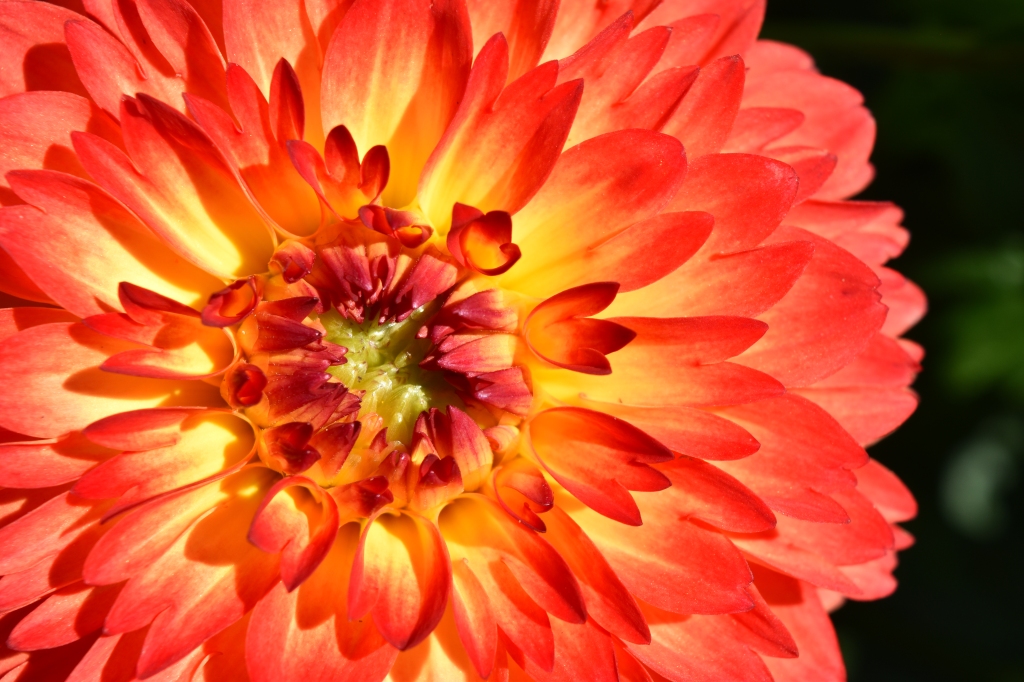
Dahlias are one of the stars of the late summer and early autumn garden – a ‘flower of the sunset’
As I write this, I am sitting out in my garden surrounded by dahlias, cleome, nicotiana, celosia, asters, and zinnias. Early autumn can be one of the most floriferous times in your garden and it certainly has lots of the lovely sunset colors that Louise Bush-Brown refers to in the quote above. Fall gardens sometimes get forgotten in our quest for a perfect spring garden. If you feel that your October garden is somewhat lacking in bloom get your notebook or phone out and make a list of what is looking great in your neighborhood. Think about what plants might be good to add to your beds. Find out the names and add them to your flower wish list.
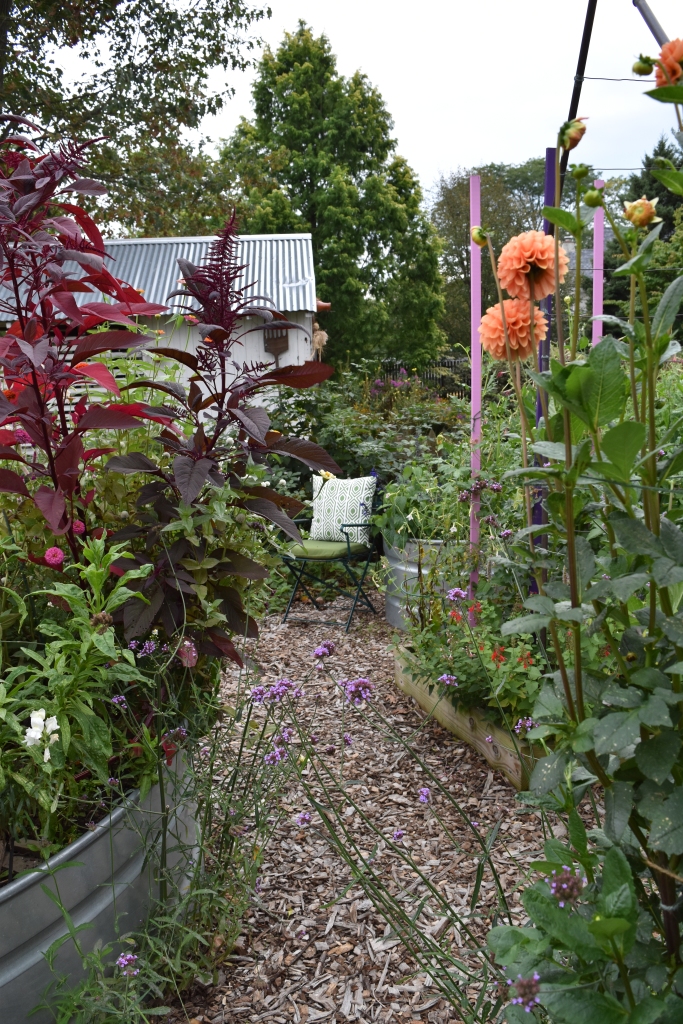
A conveniently placed chair in this flowery area at Northview is a great place to contemplate the garden
I have always loved late summer and early fall – maybe because the days and nights are cooler. I can get out into the garden and enjoy my flowers. The blooms look brighter now as they are not bleached by the intense sun, and each flower lasts longer. It is a bittersweet enjoyment though, and a little voice in the back of my head says, ‘enjoy it while you can’. The first frost is coming. I just hope not too soon. The poor tender annuals turn black and mushy overnight, and my mood is black too. It takes me a few days to recuperate and turn my mind to winter gardening.
Fall digging and winter care for dahlias
One of my all-time favorites for this time of year are dahlias. Their cheerful blooms in an array of bright colors – basically everything but blue – are great in the garden and fabulous for cutting. They are not difficult to care for but because dahlia plants were originally from Mexico and South America, they relish the warmth and hate the cold.
There is no real mystery to saving dahlias over winter it is just a question of not letting them freeze solid. In warm winters of USDA Hardiness Zone 7 or 8 gardens, you may manage to overwinter your tubers in the ground but if you get a nasty cold snap, you may lose them. Just once did we get a dahlia through the winter, by accidentally leaving it in the ground. This is our most indestructible dahlia – one called ‘Bahama Mama’.
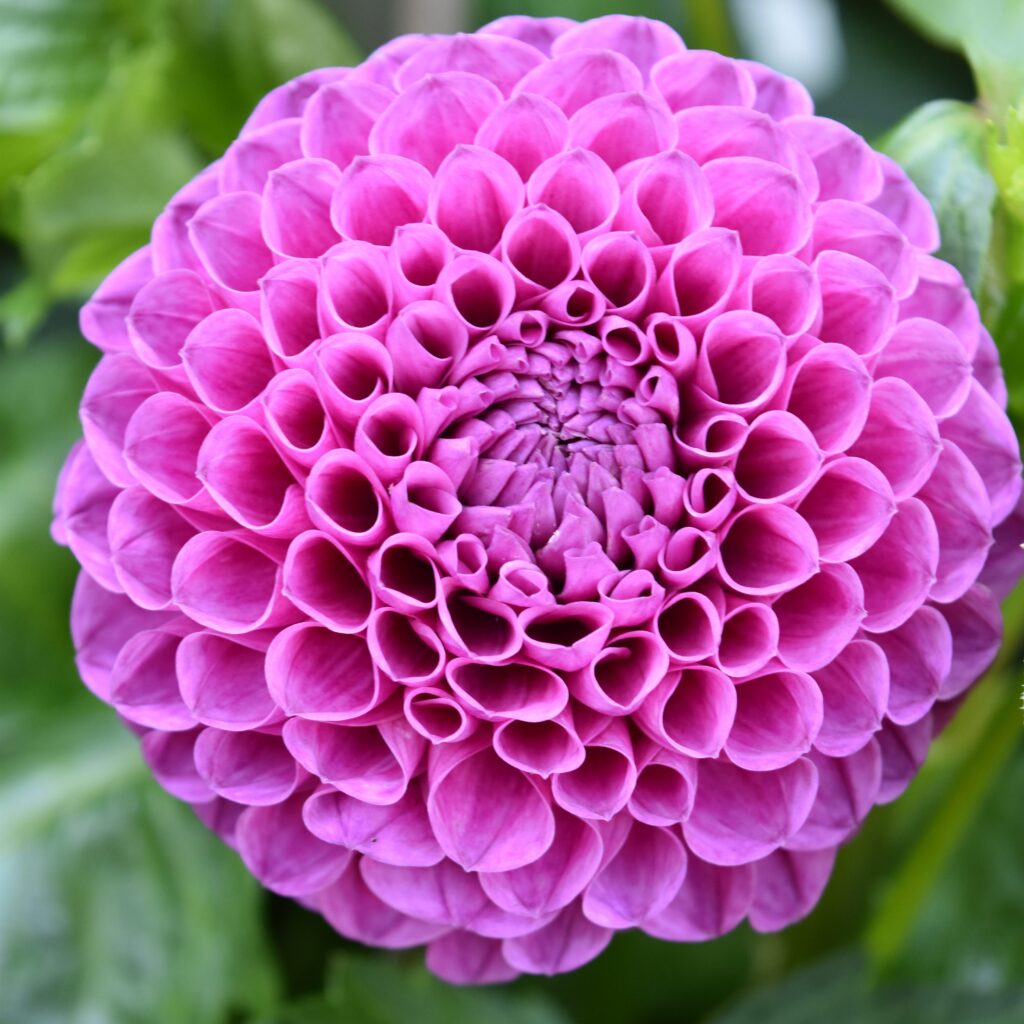
There are certain dahlias that I get attached to and don’t want to lose – so I overwinter them in my basement. (I love the distinctive ball-shape and the fuchsia-pink-magenta color of this dahlia)
There is no reason that you need to save your dahlias if you don’t want to. You can compost the whole plant, tuber and all, and buy fresh next year. The price of a new tuber is no more than buying some annual plants. However, if you do have a place to store them it does save money, and you can be sure of having the ones that you love again next year. They will have multiplied underground during the summer, so you can make more plants for next year. They certainly fit into my strategy of being a frugal gardener.
After the first killing frost
The first hard frost of the autumn will kill the tops but does not damage tubers tucked safely into the still warm soil. It is a very sad day in my garden. If I anticipate a killing frost overnight, I go out to the garden and pick every last bud and flower with extravagantly long stems. I bring them inside and arrange them around the house as one last ‘hurrah’ of summer.
The frosted remains of the dahlia plants are left in the ground for about a week to mature. What does that mean and why do you do this? Really it is to allow some of the energy to go back down to the tuber below the ground that is the storage root. After a week I will cut the tubular stems off at about six inches and compost the tops. The next step is to dig the tuber out of the ground.
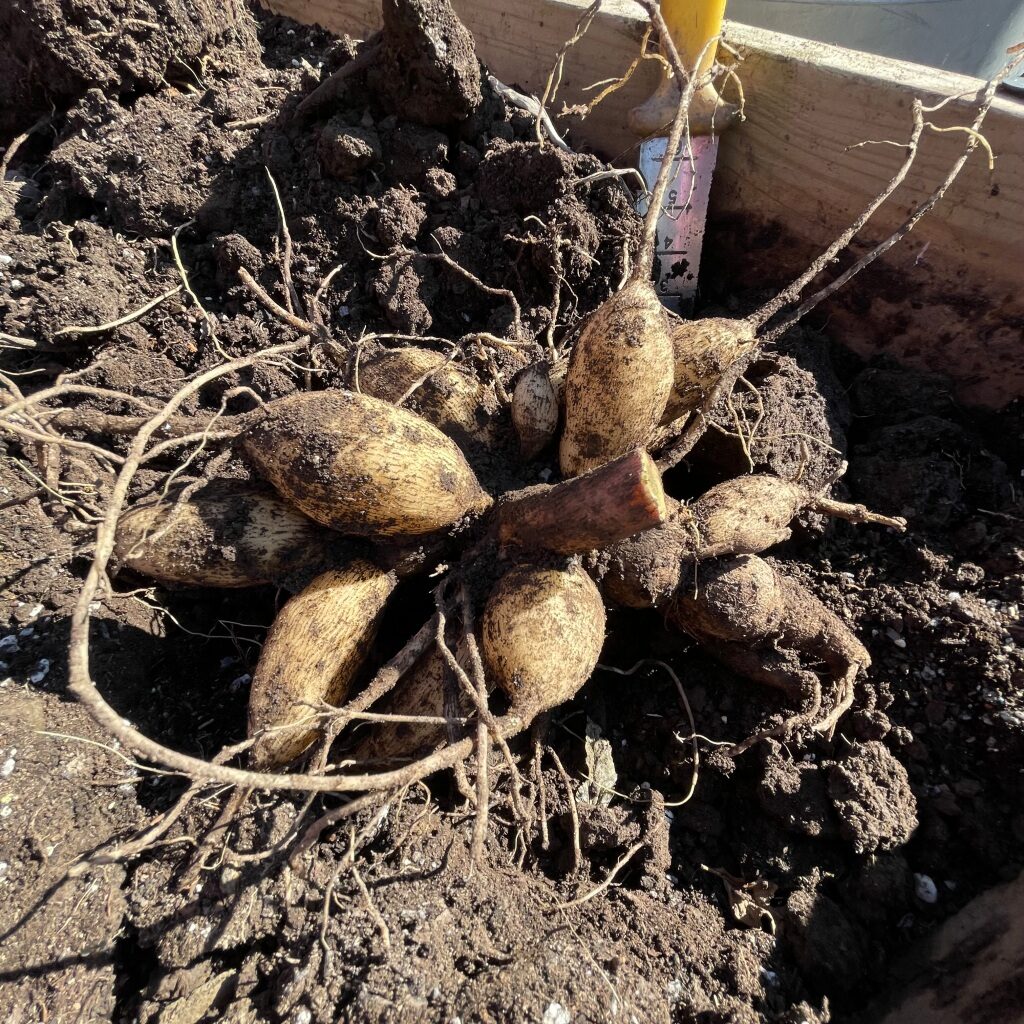
Digging the dahlia tubers
Begin to dig quite far away from where you planted the tuber. If it had a successful growing season the original smallish tuber may have multiplied significantly, and you do not want to spear it with your digging fork or spade. Lever beneath the tuber and roots and try to pull away some of the soil surrounding it so that you can see where to continue digging. Without damaging the tuber gently ease the whole thing out of the ground.
Get a crate or wheelbarrow and turn the tuber upside-down to ensure that any water that has collected inside the hollow stem can drain away. Leave the tuber in the sun for a few hours to dry out slightly. It can be left out overnight as long as the temperatures do not fall below freezing.
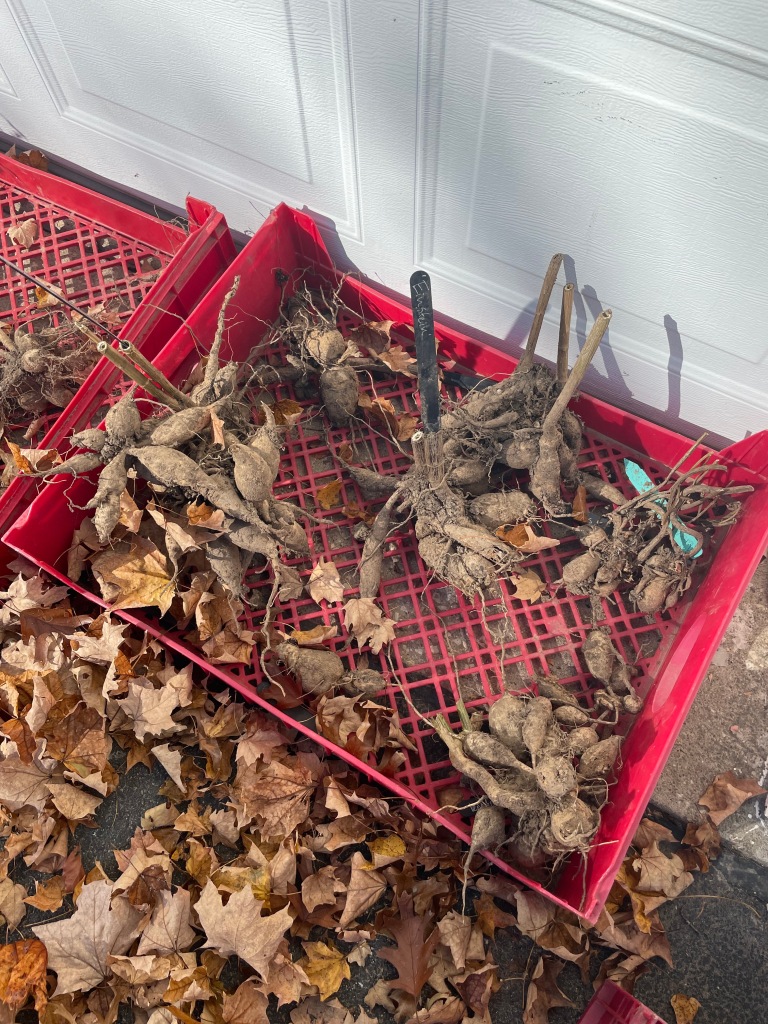
Dahlia tubers drying off in a crate. Turn them upside down to let water drain out of the hollow stems
I tend to gently brush some of the soil off the tuber. I like to leave some soil on to protect while other people wash all the soil off. Another difference of opinion is about when to divide the tubers. I leave the plants whole over winter as I find that they are less likely to desiccate. Other gardeners love to divide them in the fall. Whenever you do this, you have to make sure that each division has a part of the central stem, as that is where the new shoots will come from. Odd little bits that break off that do not have a part of the stem will not grow to make a plant. Be aware that the tubers look easy to chop into parts but certainly by the spring they have hardened up and you need a sharp knife to sever them apart. I have cut myself during this process, but I am rather accident-prone.
Protecting the dahlia tubers over winter
Next, I wrap the tuber in multiple layers of newspaper to protect it over winter. If there was a plant label that gets wrapped up in the package too. I take a permanent marker and write the name of the dahlia on the outside of the paper. It is infuriating if you lose the name and have no idea whether your dahlia is small or tall, and what size or color of bloom it is.
The paper/dahlia bundles are placed into plastic crates and taken down to the basement. They are stored in an area away from the heater. I check the tubers once a week and usually water the outside of the newspaper. In my situation, this keeps the dahlia from getting too dry. It is also important not to let the tuber get too soggy and wet, otherwise the tuber will rot. It is a fine line between one extreme and the other. Take some time to find the best place to store your tubers. The main thing is that it must be a frost-free place and ideally 45-55 degrees Fahrenheit or 7.2-12.8 degrees Celsius.
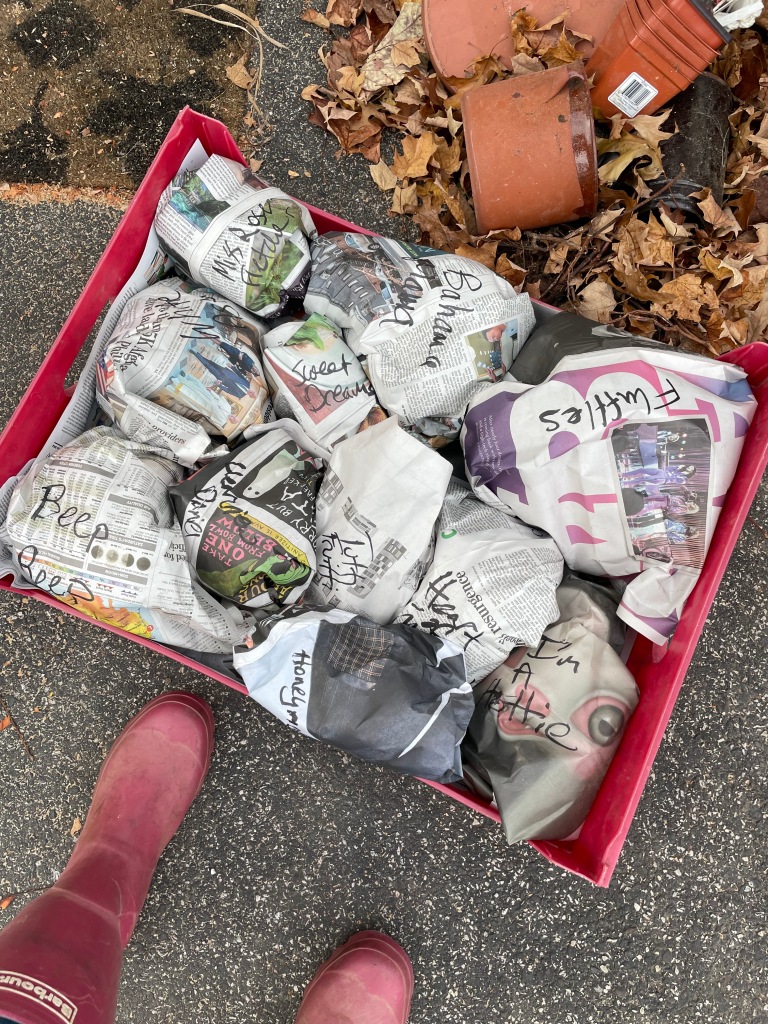
Dahlia tubers are wrapped in generous layers of newspapers, labeled, and store in a frost-free place
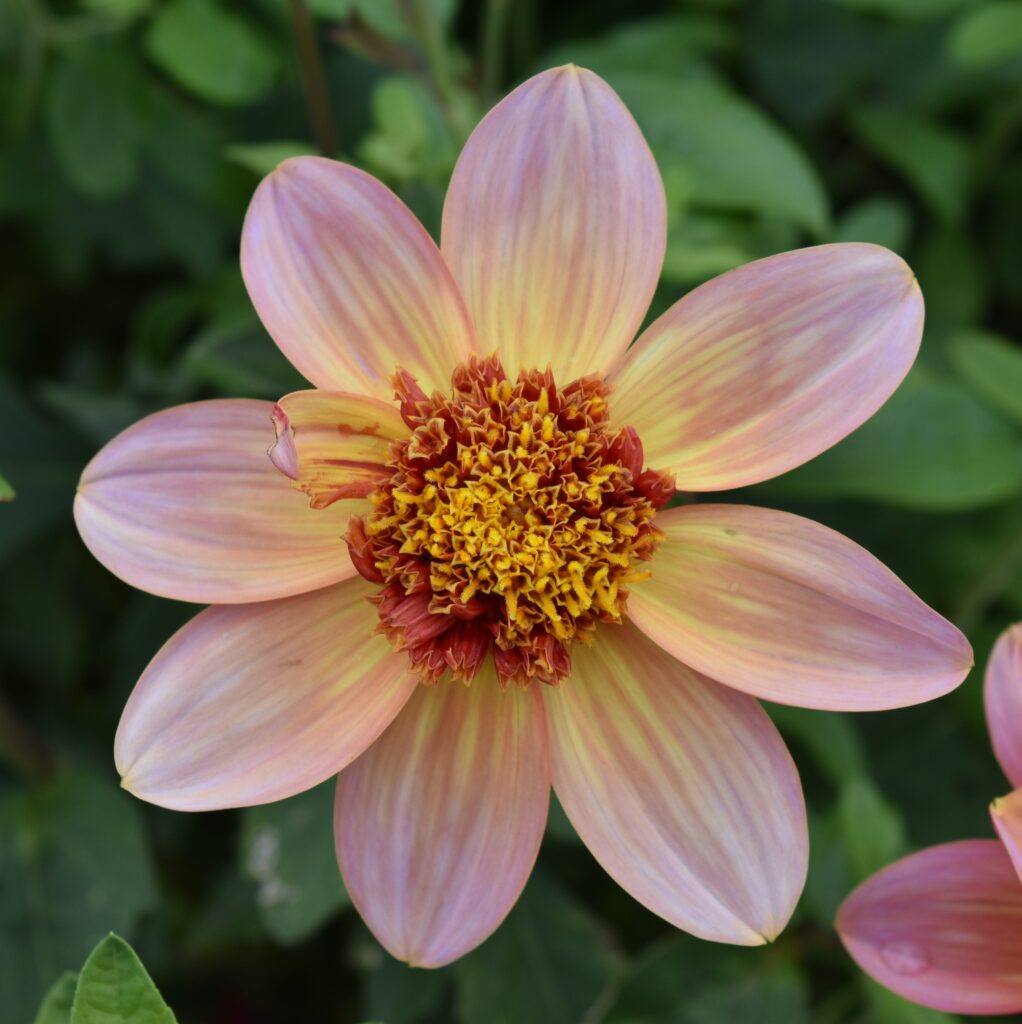
Add unusual flowered dahlias – like this anemone flowered one – to add some pizazz to your fall garden
Next month as the leaves come tumbling down, I will discuss the management of fallen deciduous leaves – always a hot topic!
Follow me on Instagram
@NorthviewGarden and
Thank you.
Bye for now
Jenny Rose Carey




Leave a Reply